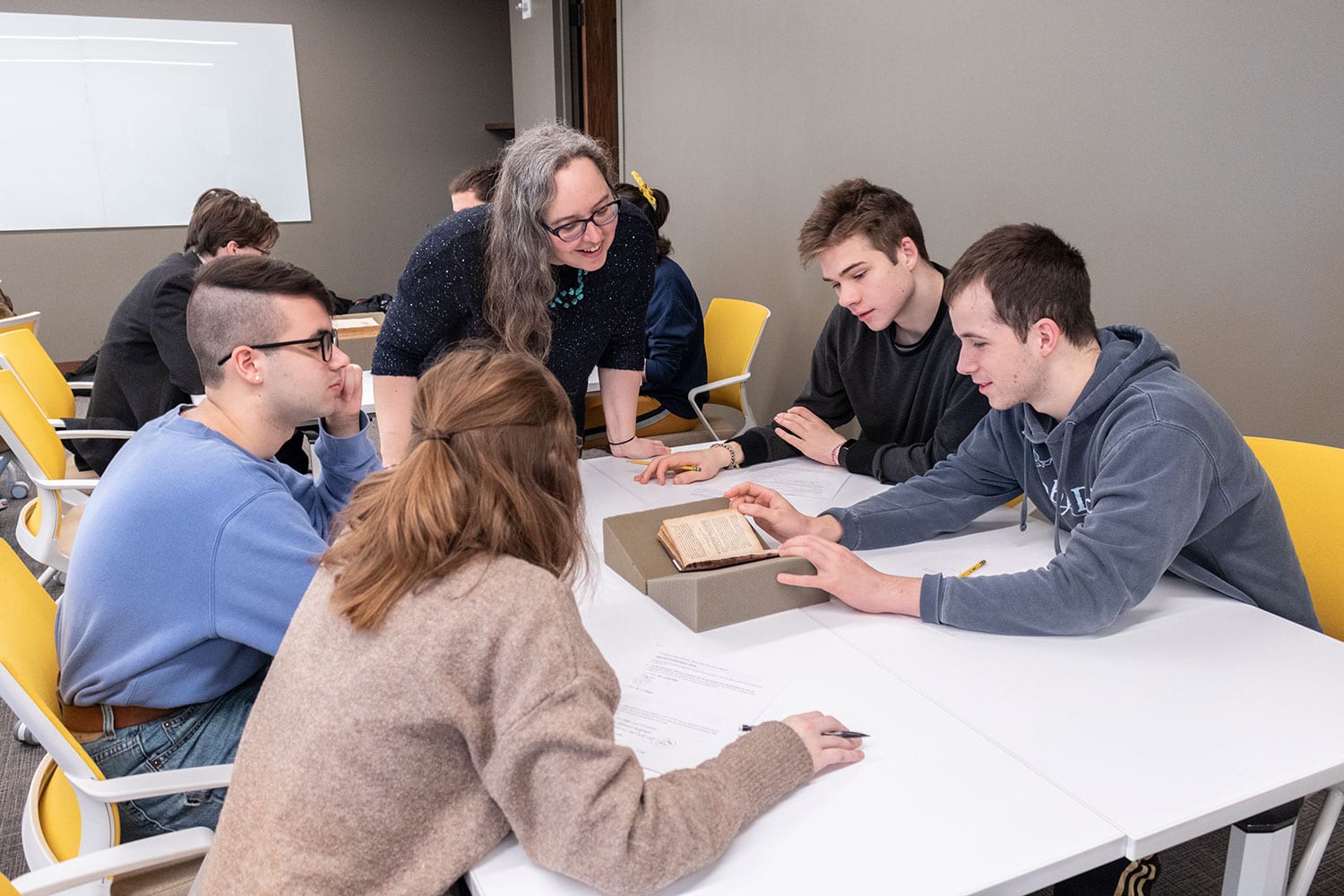Course title: “(Digitally) Narrating Second Language Identities”
Taught by: Associate Professor of Spanish Ana López Sánchez
Says López Sánchez:
The class is meant to be an exploration of the cultural experiences and the linguistic practices of (mostly, but not exclusively) Latinx people in the U.S., including Latinx students. It has two quite differentiated parts. In the first half of the semester, we focus on the diasporic and migrant experiences of (U.S.) Latinx people as constructed in literary texts (including poems, excerpts of novels, and memoirs) and in film and media. We read “classic” pieces, such as The House on Mango Street by Sandra Cisneros,as well as rather recent works, such as Philadelphia-native Chiara Alegria Hudes’s memoir, My Broken Language. The memoir was just turned into a play, and the class is super-excited to be attending the premier in New York. To look at Latinx representation on TV, we watch the recent Netflix series Gentefied, which exploresgentrification in Boyle Heights, L.A ––the title isa play of the words ‘gente’ (people) and “gentrified.”
Analyzing the texts critically (and writing about them academically) allows students’ to recognize recurrent themes, and to explore (among others) the construction of gender, race, and class in (U.S) Latinx communities. The texts read, viewed, and analyzed then serve as the basis to identify the experiences students want to focus on. That is, in the second half of the semester, the critical analysis of the first weeks leads to a more creative process in the form of both a written narrative and a digital narrative, to explore the personal. The written narrative is a first opportunity for the students to explore their multilingual and multicultural identities. The written narrative is then transformed into a multimodal product (the digital narrative), where the students use other modes or forms of “meaning making” (mainly visual) to convey a similar and yet different story. Students do a lot of revising with their peers’ help, before they reach a version of the narrative that is satisfying. At the end of the semester, we reflect on the narratives and the “identity work” done through them.
The focus and intention of the class have somewhat changed over time. Initially, it was more of an exploration of language and its connections to identity, touching on issues such as whether speaking Spanish is a requirement for being Latinx. In its most recent iterations, my main goal has been to create a class where Latinx students as well as other students (including international students who live in-between several cultures and languages) could see themselves and their families and experiences represented. In other words, I now see the class as a safe space for minoritized students to tell their own stories and to have those stories heard and cherished; and a space to use whatever variety (dialect) of the language (rather than some standard of Spanish) they use. In this sense, the class aims to normalize Spanglish (and any other “hybrid” languages), which people are still often discouraged from using in many spaces.
As an applied linguist, it is important to me that students understand how speakers of minoritized languages—in the U.S., that would be, for example, Spanish or Chinese—or of non-standardized languages (such as Spanglish), or of less prestigious varieties are stigmatized and racialized, and to empower them to fight these forms of discrimination. Most of my students are heritage language speakers (mostly of Spanish, but I often have Korean and Hindi heritage speakers in the class) who have often internalized (linguistic) ideologies that reflect negatively on them. I want to equip them to understand how those ideologies might be affecting their identities, and again, to create a space that affirms the dialects they speak as well as their translanguaging practices—in other words, to create what we call “critical language awareness.” My ultimate hope is that the class creates a greater sense of belonging—in higher education and in our department—for my students.
Learn more about other courses offered by the Department of Spanish.

